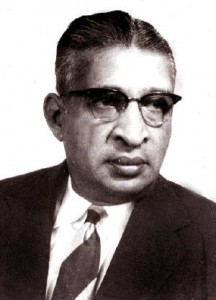By
Sashi Kumar
THERE may be a nostalgic colouring to this, but well into the 1980s it seemed that there was a vibrant public intellectualism in force in Sri Lanka that engaged with the ethnic question in a reasoned, bold and fair-minded manner. Scholars like Kumari Jayawardena, Karthigesu Sivathamby, Charles Abeysekara, Radhika Coomaraswamy, Sunil Bastian or V. Nithiyanandan and politicians of the calibre of Colin De Silva or Neelan Tiruchelvam sought to understand and bridge or transcend the deepening chasm of the ethnic divide. But they did not stand a chance against those hell-bent on descending into the depths of the chasm and dragging the country into it.
![[A Newsstand in Minuwangoda, Sri Lanka, Picture by Dennis S. Hurd, New Westminster, BC, Canada]](https://dbsjeyaraj.com/dbsj/wp-content/uploads/2015/04/Newsstand_Minuwangoda.jpg)
[A Newsstand in Minuwangoda, Sri Lanka, Picture by Dennis S. Hurd, New Westminster, BC, Canada]
So, that cerebral era was quickly overrun and trod underfoot by the terrorists and killers of the military and the militant variety. Aerial bombing, suicide bombing, decimation of civilian populations put or caught in the crossfire, rape, abduction, torture, dispossession and uprooting of homes and families, intimidation and censorship—and a fluctuating but abiding fear of any or all of these—pockmarked and vitiated society and everyday life in the island nation over the next three decades, in different ways in the dominantly Sinhala Southern Province and the Tamil Northern and mainly Muslim Eastern Provinces.
All this, apart from the last phase of the push to and final showdown of the decisive war against the Liberation Tigers of Tamil Eelam (LTTE) in 2009, which stands in an ignominious class of its own and has rattled the conscience of the international community for its genocidal excesses and human rights violations.
Through the protracted phase of the internecine struggle before this ruthless endgame, and even in the period after the LTTE was crushed and well up until this January when Mahinda Rajapaksa lost to Maithripala Sirisena in the presidential election, freedom of expression and independence of the news media were, almost inevitably and invariably, mortgaged to the dominant pumped-up sentiments of Sinhala and Tamil nationalism within the Sri Lankan state.
The self-exile of a clutch of journalists in nearby India or countries farther away flagged for international notice the manifest unfreedom in their homeland. Of course, the Sri Lankan military which, egged on by Rajapaksa’s notorious brother Gotabhaya, had set out to infiltrate civil society, and even schools, with military nationalistic values before the family coterie was displaced along with the President has scoffed at these journalists living abroad and those at home who questioned the conduct of the war as traitors.
This is hardly surprising considering that even the term “diaspora”, in the chauvinistic Sinhala understanding of the term, had become synonymous with the Tamils of Sri Lankan origin settled abroad who sympathised with the LTTE even though there are scores of Sri Lankan Sinhala men and women working in the Gulf and other parts of the world who would in the normal course of things come under that description.
Continue reading ‘The Media in Sri Lanka: “The more things change, the more they stay the same”?’ »


































![[A Newsstand in Minuwangoda, Sri Lanka, Picture by Dennis S. Hurd, New Westminster, BC, Canada]](https://dbsjeyaraj.com/dbsj/wp-content/uploads/2015/04/Newsstand_Minuwangoda.jpg)


















